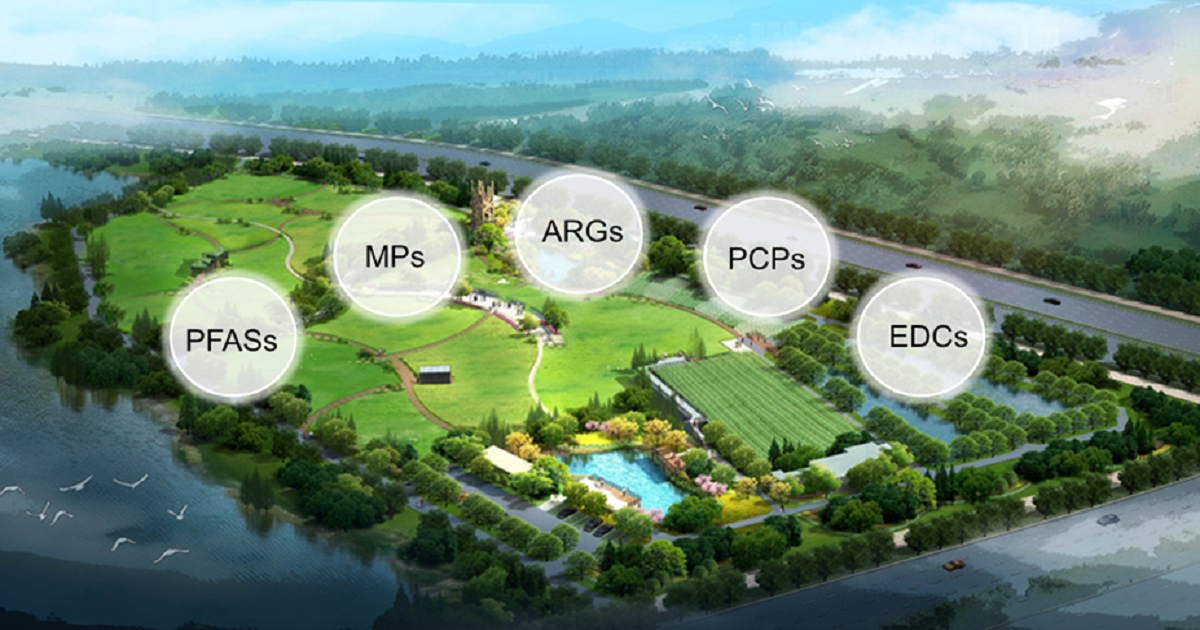Constructed Wetlands and Emerging Pollutants
A special issue of Water (ISSN 2073-4441). This special issue belongs to the section "Wastewater Treatment and Reuse".
Deadline for manuscript submissions: 20 January 2026 | Viewed by 7230

Special Issue Editors
2. School of Civil Engineering, University College Dublin, Belfield, Dublin 4, Ireland
Interests: constructed wetland; wastewater treatment; emerging pollutants, adsorption
Special Issues, Collections and Topics in MDPI journals
Interests: constructed wetland; PFAS; microplastics; biochar; sludge
Special Issues, Collections and Topics in MDPI journals
Interests: environmental pollution; water and wastewater treatment; constructed wetland; bioelectrical chemistry; modular wastewater treatment
Special Issue Information
Dear Colleagues,
We invite contributions for a Special Issue on the role of constructed wetlands in tackling emerging pollutants in water treatment, seeking to gather the latest research and innovative practices in response to rising global water quality concerns. We encourage submissions that explore, but are not limited to, the following topics:
(i) The effectiveness of constructed wetlands in removing emerging pollutants, including pharmaceuticals (PhCs), personal care products (PCPs), microplastics (MPs), antibiotic resistance genes (ARGs), per- and polyfluoroalkyl substances (PFAS), etc.;
(ii) Comparative studies on the performance of various wetland designs and configurations in treating wastewater with high concentrations of emerging pollutants;
(iii) The role of vegetation and microbial communities in enhancing the degradation of emerging pollutants within constructed wetlands;
(iv) The integration of constructed wetlands into broader water management frameworks to improve sustainability and public health.
This Special Issue responds to ongoing discussions in the water treatment community about innovative solutions for modern water quality challenges. We welcome interdisciplinary contributions from researchers, practitioners, and policymakers focused on constructed wetlands and emerging pollutants.
Prof. Dr. Yaqian Zhao
Dr. Cheng Shen
Dr. Ting Wei
Guest Editors
Manuscript Submission Information
Manuscripts should be submitted online at www.mdpi.com by registering and logging in to this website. Once you are registered, click here to go to the submission form. Manuscripts can be submitted until the deadline. All submissions that pass pre-check are peer-reviewed. Accepted papers will be published continuously in the journal (as soon as accepted) and will be listed together on the special issue website. Research articles, review articles as well as short communications are invited. For planned papers, a title and short abstract (about 250 words) can be sent to the Editorial Office for assessment.
Submitted manuscripts should not have been published previously, nor be under consideration for publication elsewhere (except conference proceedings papers). All manuscripts are thoroughly refereed through a single-blind peer-review process. A guide for authors and other relevant information for submission of manuscripts is available on the Instructions for Authors page. Water is an international peer-reviewed open access semimonthly journal published by MDPI.
Please visit the Instructions for Authors page before submitting a manuscript. The Article Processing Charge (APC) for publication in this open access journal is 2600 CHF (Swiss Francs). Submitted papers should be well formatted and use good English. Authors may use MDPI's English editing service prior to publication or during author revisions.
Keywords
- constructed wetlands
- emerging pollutants
- wastewater treatment
Benefits of Publishing in a Special Issue
- Ease of navigation: Grouping papers by topic helps scholars navigate broad scope journals more efficiently.
- Greater discoverability: Special Issues support the reach and impact of scientific research. Articles in Special Issues are more discoverable and cited more frequently.
- Expansion of research network: Special Issues facilitate connections among authors, fostering scientific collaborations.
- External promotion: Articles in Special Issues are often promoted through the journal's social media, increasing their visibility.
- Reprint: MDPI Books provides the opportunity to republish successful Special Issues in book format, both online and in print.
Further information on MDPI's Special Issue policies can be found here.







